Overview
The article focuses on providing a structured approach for businesses to select the ideal custom rug, outlining five essential steps. These steps are:
- Identifying style and needs
- Measuring space
- Exploring material options
- Customizing design elements
- Setting a budget
These steps are supported by practical advice and examples. This emphasis on thoughtful selection is crucial for enhancing business environments and fostering customer engagement. By following this comprehensive guide, flooring business owners can navigate the complexities of custom rug selection with confidence.
Introduction
Selecting the right custom rug for your business can significantly transform your space, enhancing both aesthetics and functionality. As personalized flooring solutions gain popularity, grasping the essential steps to choose the perfect rug is vital for creating an inviting atmosphere that embodies your brand identity. Yet, with an overwhelming array of styles, materials, and budget considerations available, how can you effectively navigate this landscape to achieve the ideal fit?
Identify Your Style and Needs
Begin by evaluating the overall aesthetic of your area. Consider the existing decor, color schemes, and the atmosphere you wish to create. Ask yourself:
- What colors do you prefer?
- Do you desire a bold statement piece or something more subtle?
- What style resonates with your brand—modern, traditional, or eclectic?
Draw inspiration from design magazines, online platforms like Pinterest, or even local showrooms. Create a mood board to visualize your ideas; this will serve as a crucial reference when discussing options with suppliers.
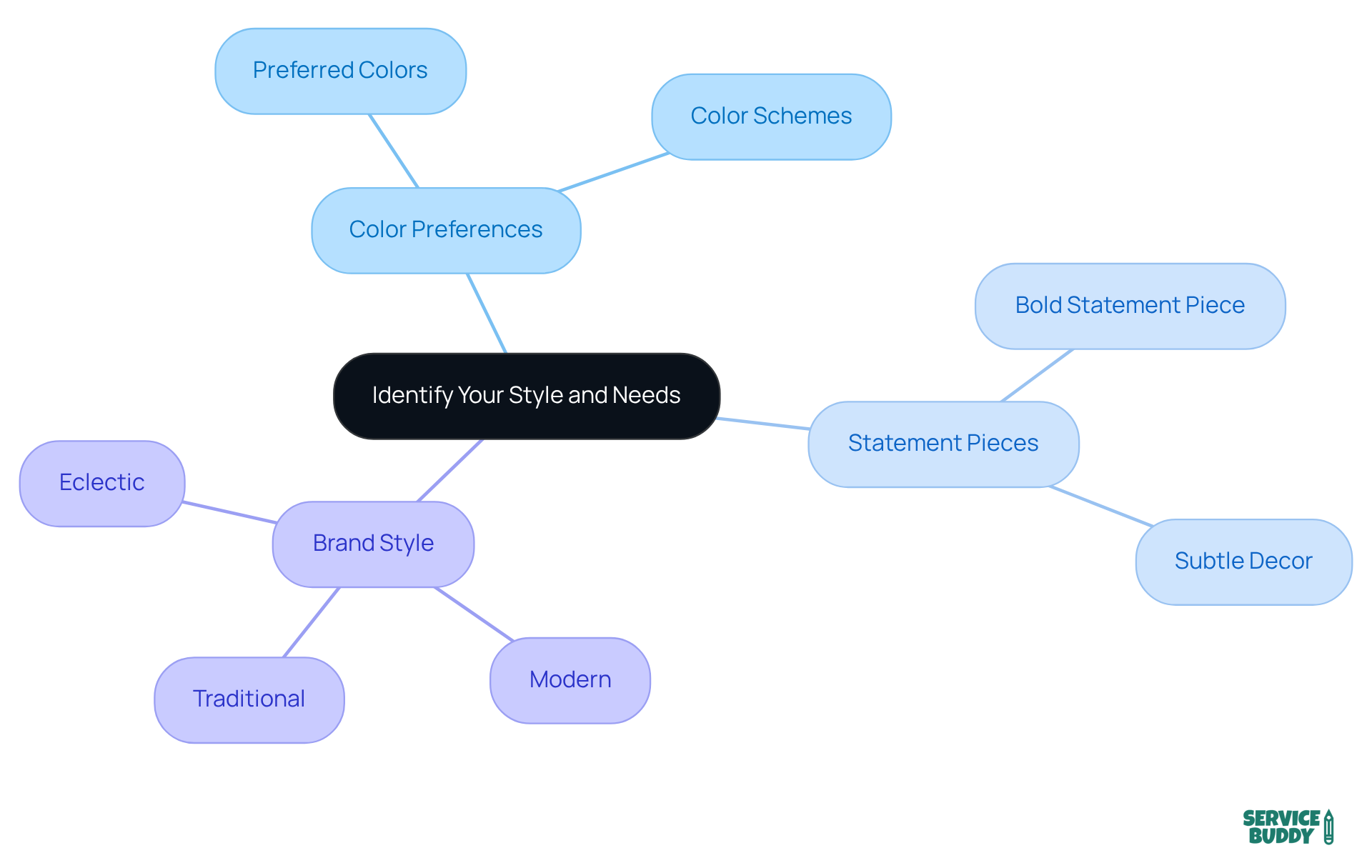
Measure Your Space Correctly
To ensure your custom rug fits perfectly in your space, follow these essential steps:
- Use a tape measure: Begin by measuring the length and width of the designated area for the rug. Accurate measurements are crucial, directly influencing the rug's fit and overall aesthetic. Notably, the sales of custom rugs have surged, with 20% of broadloom sales now attributed to custom rugs and stair runners, underscoring the increasing demand for well-fitted rugs.
- Consider furniture placement: If the rug will be positioned under furniture, include this in your measurements. Proper placement enhances both the room's design and functionality. Flooring professionals emphasize that precise measurements significantly improve rug fitting, leading to greater customer satisfaction and a more polished appearance in any setting.
- Allow room for movement: Aim to leave a border of 6-12 inches of visible flooring around the rug. This not only creates a balanced appearance but also facilitates easier movement within the area.
- Mark the dimensions: Utilize painter's tape to outline the intended size of the rug on the floor. This visual aid allows you to better understand how the rug will .
Precise measurements are essential for a custom rug, ensuring that the final product enhances the area and meets your design expectations. A recent case study on the commercial carpet market recovery indicates that businesses focusing on accurate measurements and fitting have experienced improved customer satisfaction and business outcomes.
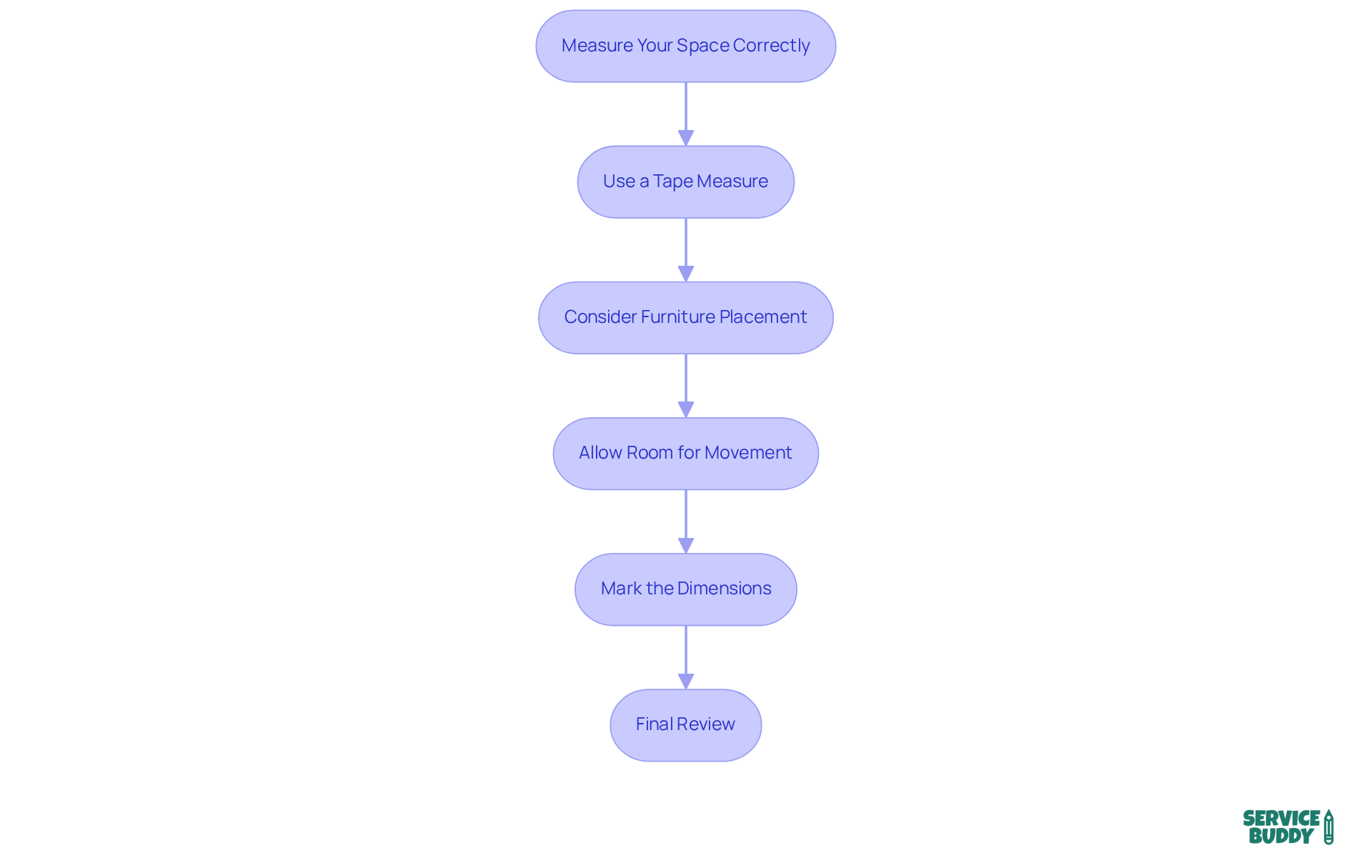
Explore Material Options and Their Benefits
Consider the following materials:
- Wool: Durable and naturally stain-resistant, making it ideal for high-traffic areas.
- Nylon: Renowned for its durability and low upkeep, perfect for commercial spaces.
- Polypropylene: An affordable option that resists moisture, suitable for outdoor use.
- Silk: Luxurious and soft, best suited for low-traffic areas.
Assess the advantages of each material in relation to your environment's specific needs, such as foot traffic, exposure to moisture, and desired aesthetic. This evaluation will empower you to make informed decisions that enhance your flooring solutions.
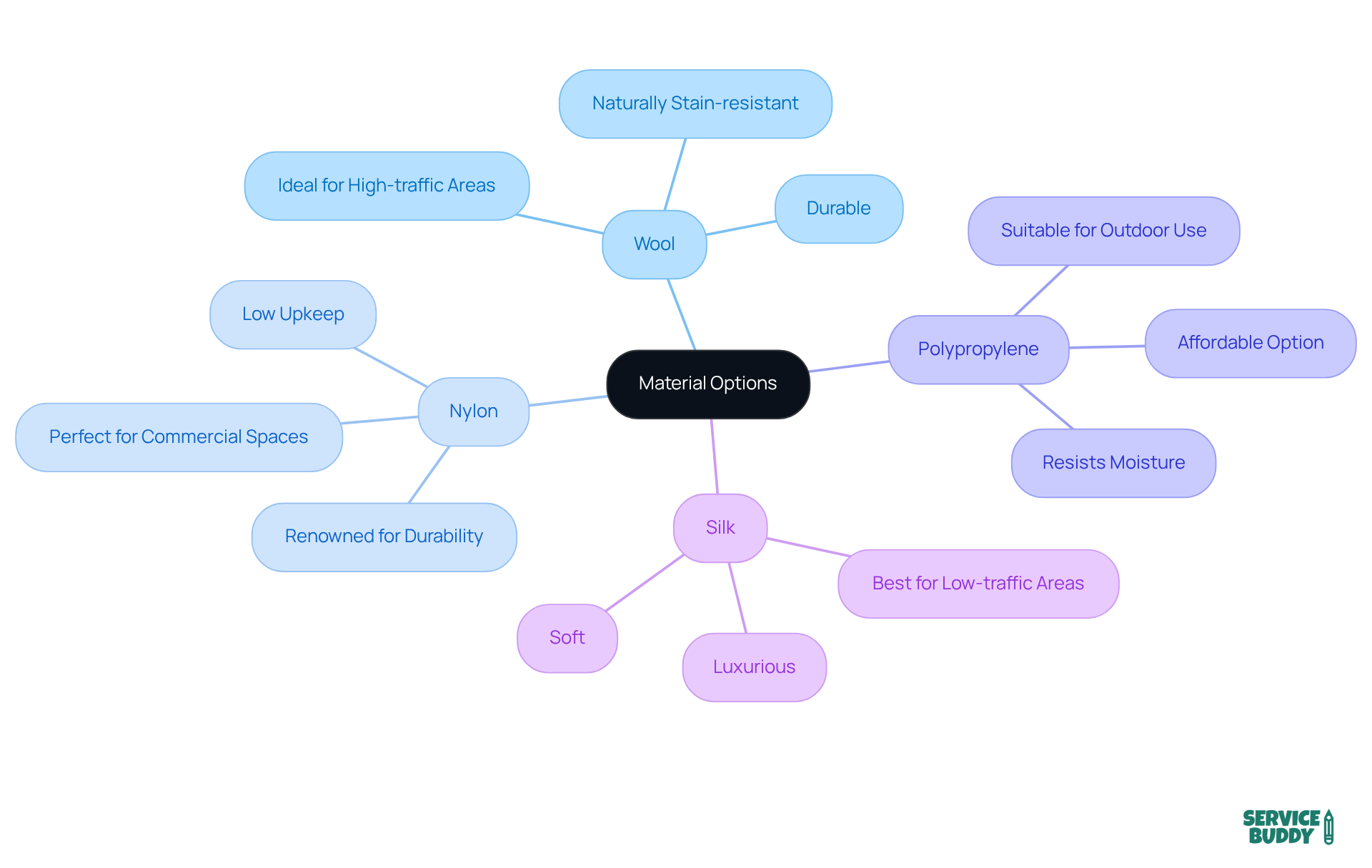
Customize Design Elements to Fit Your Decor
When , it is essential to consider several elements that will ensure it complements your business environment.
- Color: Select colors that harmonize with your existing decor. Utilize a color wheel to identify complementary shades. Choices Flooring states, "The colour of your rug doesn’t just contribute to visual style - it also affects the mood and atmosphere of your environment."
- Pattern: Decide whether you prefer a solid color, geometric patterns, or floral motifs. Patterns can introduce depth and interest to your space. In 2025, popular rug patterns feature bold geometric shapes and intricate florals, reflecting current styling trends that emphasize vibrant aesthetics.
- Shape: Rugs are available in various shapes, including rectangular, round, and square. Choose a shape that fits your layout and enhances the room's flow. For example, a round rug can soften the lines of a square room, creating a more inviting atmosphere.
- Borders and Edges: Consider adding a border or unique edge finish to give your rug a polished look. This detail can also connect with the overall design theme of your organization.
Examples of successful customization show that numerous companies have effectively enhanced their environments with custom rug designs and colors. For instance, a nearby café incorporated a vibrant, floral-patterned rug that not only illuminated the area but also aligned with their brand's identity, drawing in more customers. Statistics indicate that businesses utilizing striking visuals often experience heightened customer engagement.
- Rug Placement: Positioning your rug opposite the room's focal point, such as a fireplace or entertainment center, can enhance the overall layout and utility of the area. This strategic placement fosters a more inviting and functional environment.
By thoughtfully considering these stylistic elements, you can create a custom rug that enhances your space while also reinforcing your brand identity.
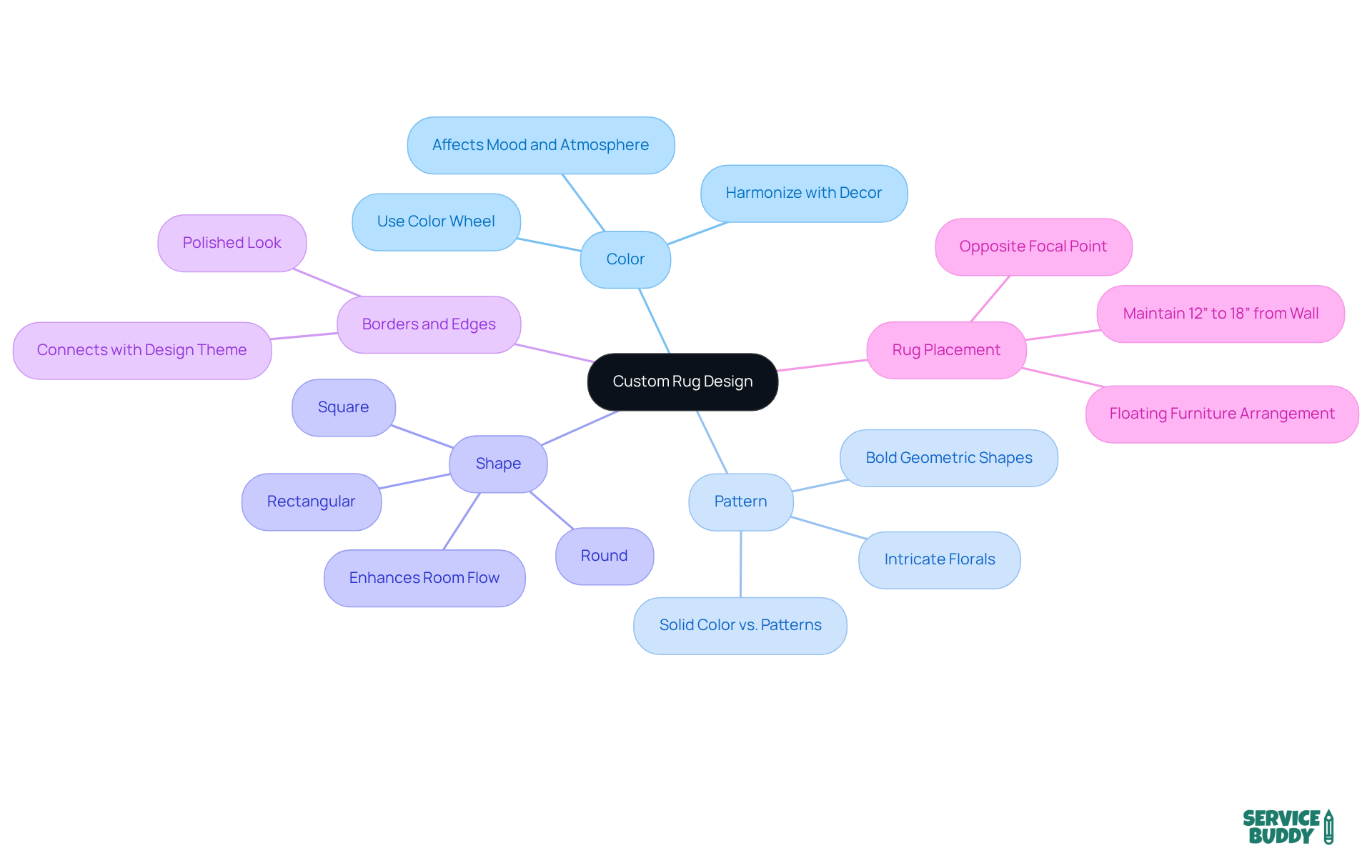
Set a Budget and Find Reliable Suppliers
Establishing a budget for personalized carpets is crucial for making informed buying choices. Here are key steps to guide you:
- Research Expenses: Explore the typical costs for a custom rug, which can differ greatly depending on size, material, and complexity of the pattern. For instance, a standard 5x7-foot wool rug may range from $300 to $1,200, while larger, more intricate designs can exceed $2,000.
- Determine Your Maximum Spend: Establish a realistic budget that encompasses not only the rug cost but also potential additional expenses such as shipping and installation. It's wise to allocate an extra 10-20% for unforeseen costs.
- Find Suppliers: Identify trustworthy providers specializing in custom carpets. Utilize online reviews and seek recommendations from industry peers to ensure you partner with reliable vendors. A strong supplier relationship can lead to better pricing and service. As Kristin Smoby states, "get to know your customers. Humanize them. Humanize yourself. It’s worth it," which applies to building relationships with suppliers as well.
- Request Quotes: Reach out to multiple suppliers to obtain quotes tailored to your specifications. This allows for comparison and negotiation, ensuring you secure the best deal. Remember, , so a good supplier relationship can enhance your company's reputation.
- Negotiate Wisely: Leverage your research and quotes to negotiate terms with suppliers. Successful negotiations can lead to better pricing and favorable terms, ultimately benefiting your bottom line. For instance, a flooring company that effectively secured bulk pricing for custom rugs reported a 15% decrease in expenses, which greatly influenced their profitability. As Paul Greenberg observes, "If a customer appreciates you — and keeps appreciating you — they will keep engaging with you," which highlights the significance of nurturing strong connections with your suppliers.
By following these steps, you can effectively budget for custom rugs and build relationships with reliable suppliers, positioning your business for success in the competitive flooring market.
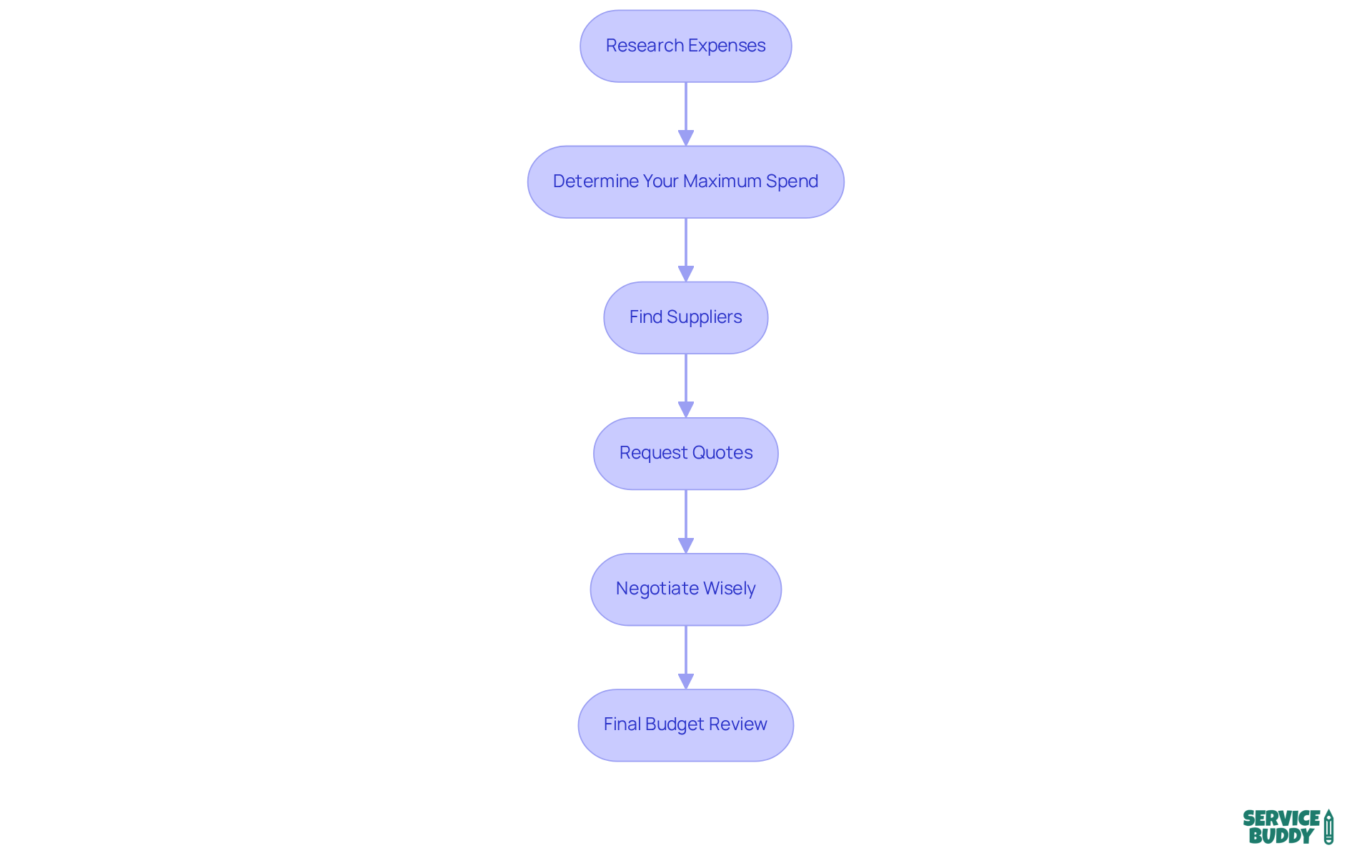
Conclusion
Choosing the perfect custom rug for a business is a multifaceted process that requires careful consideration of style, space, materials, design elements, and budget. By thoughtfully evaluating these aspects, businesses can select a rug that not only enhances their environment but also reflects their brand identity and meets practical needs.
This article outlined five essential steps to guide this selection process:
- Identify personal style and specific needs.
- Accurately measure the intended space.
- Explore various material options.
- Customize design elements to fit existing decor.
- Set a realistic budget while finding trustworthy suppliers.
Each step plays a critical role in ensuring the final product aligns with both aesthetic desires and functional requirements.
Ultimately, investing in a custom rug can significantly impact a business's atmosphere and customer experience. By following these guidelines, companies can create inviting spaces that resonate with their clientele, fostering a sense of connection and engagement. The right custom rug not only beautifies a space but also serves as a strategic element in branding and customer satisfaction, making it a worthwhile investment for any business looking to elevate its environment.
Frequently Asked Questions
How can I identify my style and needs for a custom rug?
Start by evaluating the overall aesthetic of your area, considering existing decor, color schemes, and the atmosphere you want to create. Reflect on your color preferences, whether you want a bold statement piece or something subtle, and what style resonates with your brand—modern, traditional, or eclectic. Draw inspiration from design magazines, online platforms like Pinterest, or local showrooms, and create a mood board to visualize your ideas.
What steps should I take to measure my space correctly for a custom rug?
To measure your space accurately, use a tape measure to determine the length and width of the designated area for the rug. Consider the placement of furniture, as this affects the rug's fit. Allow for 6-12 inches of visible flooring around the rug for a balanced appearance and easier movement. Additionally, mark the dimensions on the floor using painter's tape to visualize how the rug will fit within the room's layout.
Why are accurate measurements important for custom rugs?
Accurate measurements are crucial because they directly influence the rug's fit and overall aesthetic. Properly measured rugs enhance the room's design and functionality, leading to greater customer satisfaction. Businesses that focus on precise measurements and fitting have reported improved customer satisfaction and better business outcomes.




